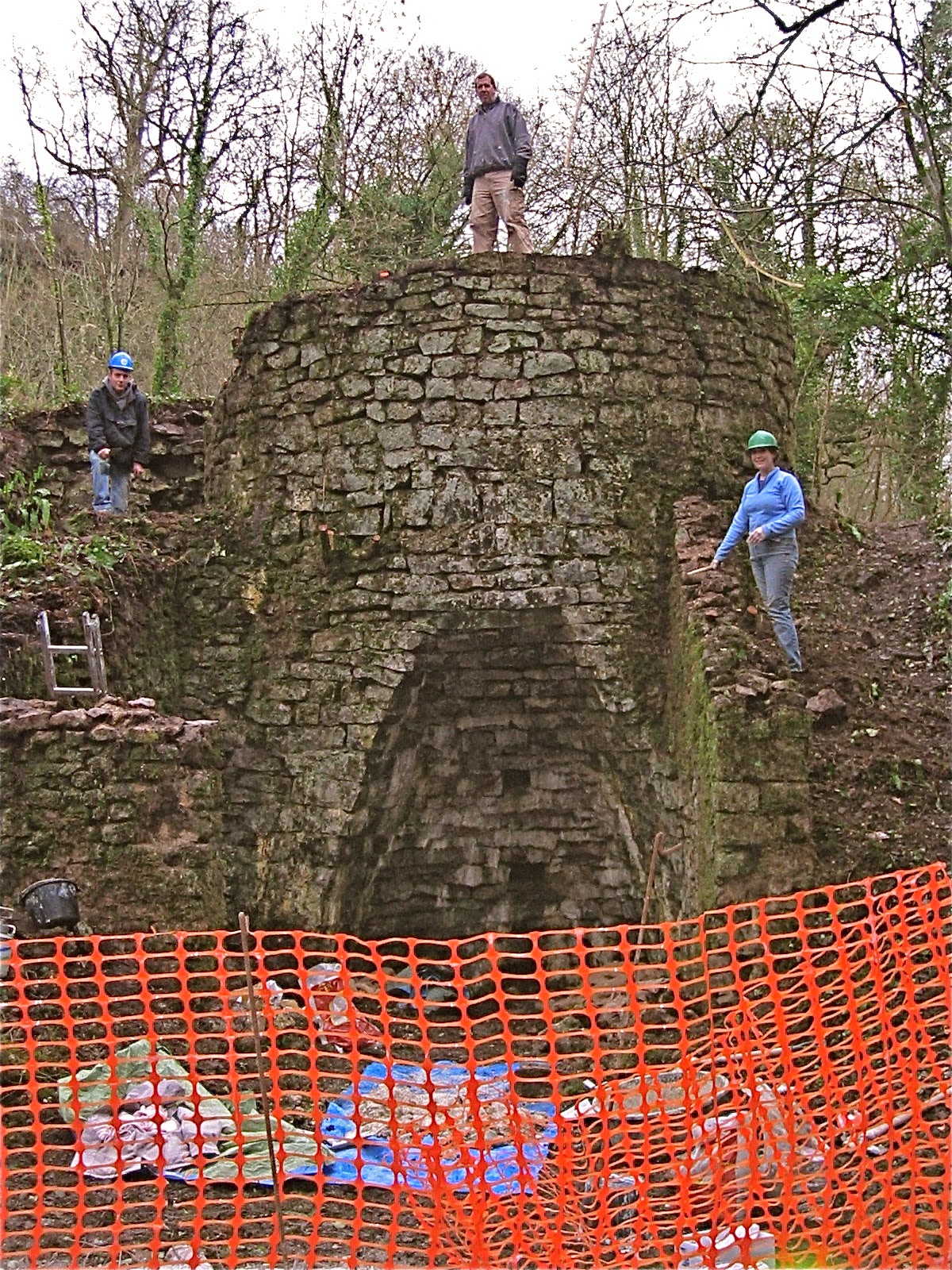Industrial Archaeology
Dec 14, 2012
The limekilns at Vallis in Frome are of Victorian date and used for burning limestone to make quicklime for building and agricultural purposes.
Built into the side of a hillock, they comprise a circular pit about 3m in diameter and up to 4m in depth, in which the lime was fired using timber, charcoal or coal (from the Somerset Coalfields) as fuel. At the base of the pit there are drawholes or stokeholes, through which the fire was lit, fed, and the ashes and lime extracted. Mounds of now overgrown Victorian lime remain from their last firing.
Much of the structure of the 19th century kilns were in generally sound condition although there were areas which needed to be addressed in order to prevent more serious decay from creeping in. Once the surrounding tree growth was cleared we focused on two kilns.
Cavities were maintained in the core of the kilns for the resident greater horseshoe bat population.
Kiln 1. We introduced a water shedding hydraulic lime capping to the top of the cylinder, all adjacent walls were pointed and the fire brick lining rebuilt. We superficially packed out a large movement crack to an depth of 2 inches where we introduced access/exit points for the hibernating Bats and rebuild areas of the corbelled stonework at the apex of the arch
Kiln 2. Due to funding limitations we proposed to introduce a temporary water shedding terram (membrane) and turf capping to the top of the cylinder, although it would be more appropriate to repair and rebuild the top three courses as above along with all adjacent walls and to point & pack out the large movement crack in a similar bat friendly fashon, Areas of the corbeled stonework at the apex of the arch were rebuilt as well as the small collapsed area to the rear of the kiln.
Repointing & grouting was done using a suitable putty lime mortar guaged with a pozzolan (to achieve a quicker set) matched to the original & with hydraulic lime used for surface capping In general it was recommended that stonework that has totally failed in a position that affected the weathering elements of the kilns be replaced. Voids within the mass of the walls for example were filled with a gravity injected lime grout. Some trial areas were repointed using original lime found on site.
